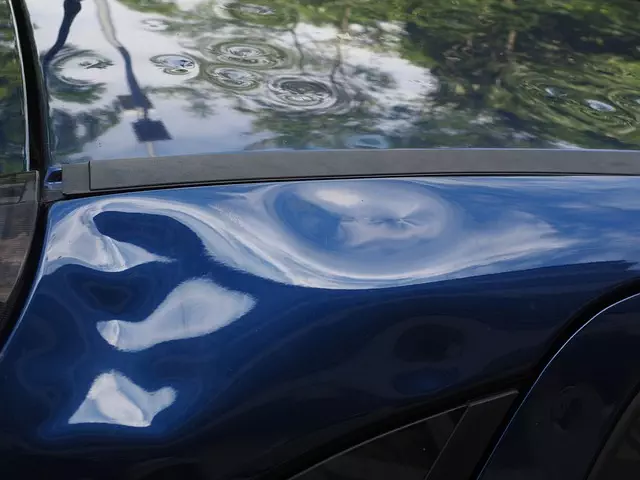Comprehensive car insurance offers protection against various unforeseen events, providing peace of mind, emotional relief, and valuable added benefits. Rates are influenced by driving history, vehicle type, location, and coverage levels, with clean records and certain demographics typically leading to lower premiums. Understanding policy options, comparing quotes, and evaluating needs can help reduce costs. Comprehensive policies cover non-collision damages like theft, vandalism, and natural disasters, offering broad protection tailored to individual preferences and budget.
“Uncover the benefits of affordable comprehensive car insurance, a crucial safety net for every driver. This guide navigates the intricacies of what this coverage entails, shedding light on its extensive protection against unforeseen events. From understanding policy nuances to choosing the right provider, we’ll explore strategies to reduce costs without compromising quality.
Prepare to delve into real-life scenarios where comprehensive insurance proves invaluable, debunk common myths, and gain insights into different policy types. By the end, you’ll be equipped with the knowledge needed to make informed decisions regarding your vehicle’s safety.”
Understanding Comprehensive Car Insurance: What It Covers

Comprehensive car insurance is a type of coverage that goes beyond the standard liability and collision policies. It offers protection against a wide range of unforeseen events, providing peace of mind for drivers who want to be prepared for any eventuality. When you have comprehensive insurance, your vehicle is covered if it’s damaged or stolen due to things like natural disasters (such as floods, hurricanes, or hailstorms), animal-related incidents, vandalism, and even theft.
This type of insurance also covers specific types of damage that might not be included in other policies. For example, it can help with repairs or replacements if your car is damaged by falling objects, like tree branches or construction debris. Comprehensive insurance also typically includes coverage for glass breakage, such as cracked or broken windshields, and may even extend to rental car expenses if your vehicle is unavailable due to a covered event.
Benefits of Having Comprehensive Insurance

Having comprehensive car insurance offers numerous advantages that extend far beyond just financial protection. Firstly, it provides peace of mind, knowing your vehicle is covered in case of any unforeseen events like theft, natural disasters, or accidental damage. This coverage can be a lifesaver, sparing you from the emotional and financial burden of unexpected repairs or total loss.
Moreover, comprehensive insurance often includes benefits such as roadside assistance, rental car coverage during repairs, and even concessionary rates on future policies if you remain claim-free. It also helps maintain your driving record clean, which can lead to better insurance rates in the long run. In today’s world, where vehicle damage or theft can occur due to various reasons, comprehensive insurance acts as a shield, ensuring you’re not left high and dry when unexpected incidents arise.
Factors Affecting Comprehensive Car Insurance Rates

Several factors influence comprehensive car insurance rates, and understanding them is key to finding affordable coverage. One significant factor is your driving history; a clean record typically leads to lower premiums as insurers perceive safer drivers. Age also plays a role; younger or older drivers might face higher costs due to perceived risk levels.
The type of vehicle you own matters too. High-performance cars or those with advanced technology often come with higher insurance rates. Location is another critical aspect, as urban areas with higher traffic density can result in increased premiums. Additionally, your chosen deductibles and the level of coverage you opt for will significantly impact the cost of comprehensive insurance.
Top Ways to Reduce Costs on Comprehensive Coverage

To keep comprehensive insurance costs low, consider these top strategies. First, shop around and compare quotes from multiple providers. Rates can vary significantly, so taking the time to assess different options could save you substantial amounts. Additionally, bundling your auto policy with other types of coverage, like home or life insurance, often results in significant discounts.
Next, evaluate your coverage needs carefully. Comprehensive insurance is designed to protect against non-accident events like theft, vandalism, and natural disasters, but if these risks are lower for you, consider adjusting your policy accordingly. Opting for higher deductibles can also reduce premiums, as it means you’ll pay more out of pocket in the event of a claim but could save on monthly payments.
Different Types of Comprehensive Policies Explained

Comprehensive insurance policies offer a wide range of coverage options, each designed to cater to specific needs and preferences. These policies typically go beyond the standard liability and collision coverage, providing protection against various unforeseen events. One such option is the ‘All-Risks’ policy, which covers almost every possible peril, from natural disasters like floods or earthquakes to man-made incidents like theft or vandalism. This type of comprehensive insurance is ideal for those seeking complete peace of mind.
Another common variant is the ‘Specified Perils’ policy, which, as the name suggests, focuses on specific, pre-defined risks. This could include coverage for events like fire, lightning, riot, or civil commotion. Policies of this nature are often more affordable than ‘All-Risks’ options, making them an attractive choice for budget-conscious individuals who still want comprehensive protection against specific, yet common, dangers.
How to Choose the Best Provider for Your Needs

When choosing an affordable comprehensive car insurance provider, it’s essential to consider your specific needs and preferences. Start by evaluating the coverage options offered by different companies. Comprehensive insurance is designed to protect against a wide range of risks, from accidents and theft to natural disasters and vandalism. Ensure that the provider offers the types of coverage you require, such as collision, roadside assistance, and medical payments, in addition to comprehensive protection.
Next, compare pricing and policies to find the best value for your money. Consider factors like deductibles, discount eligibility, and claims processes. Some companies may offer lower rates for safe driving history or bundling multiple policies. Additionally, read customer reviews and ratings to gauge the quality of service and support you can expect. This will help you make an informed decision on which provider aligns best with your requirements for affordable comprehensive car insurance.
Claims Process and What to Expect

When it comes to comprehensive car insurance, understanding the claims process is crucial. Here’s what you can expect when filing a claim. After reporting the incident to your insurance provider, they will typically assign an adjuster to review and assess the damage to your vehicle. This involves a thorough inspection of both the visible and underlying components to determine the cost of repair or replacement.
The adjuster will then provide you with an estimate for the repairs, which outlines the specific work required and the associated costs. Once approved, your insurance company will handle the rest. They will either arrange for direct repairs at a trusted workshop or issue you with a check to cover the cost of repairs elsewhere. It’s important to remember that comprehensive insurance doesn’t just cover accidents; it also protects against theft, natural disasters, and other unforeseen events, providing peace of mind behind the wheel.
Real-life Scenarios Where Comprehensive Insurance Saves the Day

Comprehensive insurance can be a lifesaver in unexpected situations. Consider this scenario: You carefully drive through an area with heavy morning fog, following all traffic rules. However, due to the poor visibility, you collide with another vehicle that slipped off the road. Without comprehensive coverage, your damages might not be fully covered, leaving you stranded and facing high repair bills. But with comprehensive insurance, these unforeseen circumstances are protected.
Another example is when a natural disaster strikes. Say a sudden storm causes significant flooding in your area, damaging or even totally destroying many vehicles parked on the street. Comprehensive insurance would step in to help replace or repair your car, providing financial relief during challenging times. This added protection offers peace of mind, ensuring you’re not left with a substantial financial burden when faced with such unpredictable events.
Myths Debunked: Separating Fact from Fiction About Comprehensive Insurance

Many people confuse comprehensive insurance with collision coverage, but they are distinct types of protection. Comprehensive insurance covers damages to your vehicle from non-collision events like theft, vandalism, natural disasters, or even accidental damage. On the other hand, collision coverage only kicks in when your car collides with another object or vehicle.
A common myth is that comprehensive insurance is too expensive for most drivers. However, this isn’t always true. Depending on your specific needs and driving history, comprehensive insurance can be quite affordable. It’s essential to shop around and compare quotes from different insurers to find the best deal. Additionally, maintaining a clean driving record and choosing a higher deductible can help lower your premiums.



